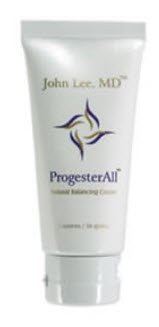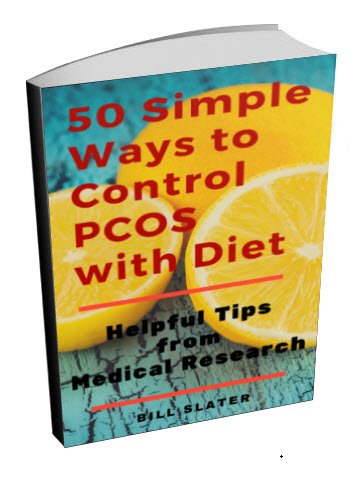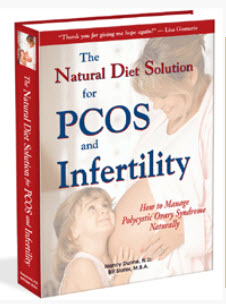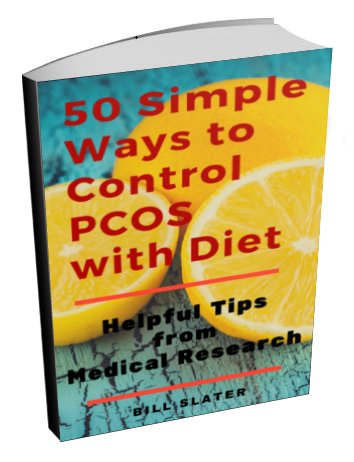Natural Progesterone Cream -- Possible Way to Treat PCOS?
The progesterone used for bioidentical hormone replacement comes from plant fats and oils. "Bioidential" hormone replacement means the hormone has exactly the same structure as the natural hormone inside your body.
Free PCOS Newsletter
In contrast, a patented, synthetic hormone has a structure that is not found naturally in the body.

Typically, a substance called diosgenin is extracted from a very specific type of wild yam that grows in Mexico, or from soybeans. In a laboratory, diosgenin is chemically altered, eventually becoming an exact replica of real human progesterone.
Other human steroid hormones, including estrogen, testosterone and cortisone, are often synthesized from diosgenin as well.
Oral vs. Progesterone Cream
There are two basic routes of administration:
- Transdermal (through the skin) progesterone, in the form of creams, gels and patches.
- Oral progesterone (usually referred to as oral micronized progesterone, or OMP).
The transdermal method tends to be more popular. One reason for this trend involves something known as bioavailability, or how usable something is to your body.
While oral doses of progesterone circulate through your liver before becoming available for use, progesterone creams, applied to certain areas of your skin, are absorbed directly into circulation, and are not subject to this "first-pass effect" of the liver.
As a result of being partially metabolized by the liver, as much as 80% to 90% of an oral dose of progesterone can be lost. Thus, at least 200 to 400 mg daily is needed orally, to result in the dose of 15 to 24 mg daily (an amount that closely matches how much your body normally can make in a day) that can be given directly in a cream.
The positive effects progesterone can have for your PCOS symptoms may be similar with a cream or an oral dose. However, when the high amounts needed for oral dosing pass through your liver, they can create an unnecessary load on it and may result in the formation of metabolites that can have negative effects as well.
A Problem with Progesterone Cream
Unfortunately, there are some potential downsides to progesterone creams as well. Since such creams are typically made by independent compounding pharmacies, the creams are not standardized. Thus, there can be no guarantee of the amount of progesterone present in each batch of a cream.
It is very important to find a pharmacy of exceptional quality, and to use them exclusively, as the amounts of progesterone you find in a cream don’t vary as much from batch to batch as they do from pharmacy to pharmacy.
Also, as with most creams, the amount of hormone delivered throughout the body is unpredictable. This is because the hormone has to be absorbed through your skin and into your blood. The amount that gets into circulation for distribution to other parts of your body depends on the thickness and temperature of your skin, and can vary markedly from individual to individual, making it hard to predict the effect it will have.
Therefore, when using the cream it's imperative to get specific instructions from your doctor or pharmacist and then follow those directions consistently.
Finally, it’s important to note that progesterone is fat soluble, and can potentially build up in the fat cells of your body. Such medications should not be used forever and as soon as your symptoms have stabilized, your doctor should consider taking you off of them to see how you do.
While problems may or may not arise from using hormone medications, a healthy diet will do much to normalize your hormones without any side effects at all. Hormone replacement therapy is usually a short-term solution for your condition.
Improving your diet is a long term commitment that helps you maintain improvements in your symptoms as you keep healthy and energetic in the years to come.
An informative resource for natural progesterone cream is
Dr. John Lee's website.
Related Articles
Get Answers to your Questions about
- Fertility
- Weight Control
- Hair Loss
- Stress
- Unwanted Hair
- Acne...and more!
FREE PCOS Report
and Newsletter

Your email is safe with us. We respect your privacy, and you may unsubscribe at any time.
Recent Articles
-
PCOS Long Journey to The Happy End
Apr 30, 18 07:24 PM
Hi Girls, Maybe my story will have one day a good end but I am not there yet. Until I was 31 years old I lived my dream, having lovely husband, good -
PCOS and Miscarriage
Apr 17, 18 04:03 PM
Proper diet and natural supplements can help the body maintain a pregnancy through successful delivery.
-
How to Deal with PCOS and Stress
Apr 04, 18 04:19 PM
Your body has a natural capacity to heal itself if you provide it with the necessary tools.





